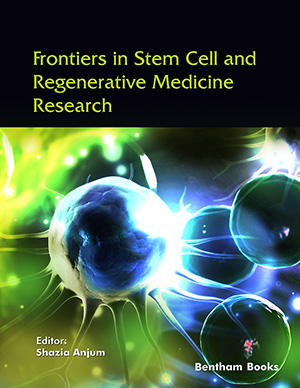
Abstract
Background and Objective: Breast cancer is the world's most common malignancy. Despite significant advances in the diagnosis and treatment of the disease, the associated mortality rate is still high. Tumor initiating cells known as cancer stem cells with unique abilities are suspected responsible for therapy failure and poor prognosis. Leucine-rich repeat-containing G-protein-coupled receptor 5 (LGR5) is a cancer stem cell marker that promotes aggressive features in breast cancer cells. So, the aim of this study was to perform a systematic review and meta-analysis to evaluate LGR5 as a therapeutic target for breast cancer.
Methods: This systematic review and meta-analysis were performed using databases of Web of Science, Scopus, and PubMed. We searched these databases with LGR5 and Breast Cancer and related keywords based on the mesh database until Oct12, 2021. All studies that reported the rate of LGR5 high expression with Immunohistochemistry in breast cancer patients were included in this review. We used the STATA and random effect models for data analysis.
Results: Finally, 7 studies including 2632 breast cancer samples were studied. The pooled prevalence of LGR5 high expression in breast cancer was 48.6 % (CI95%: 40.5-56.7%, I2=0.0) and in triple negative was 48.6% (CI95%: 38.4-58.7%, I2= 0.0).
Conclusion: Our findings show that the rate of LGR5 high expression in breast cancer in general and especially in triple-negative was considerable and it seems that this is a potential therapeutic target for breast cancer.
Keywords: LGR5, therapeutic target, breast cancer, cancer stem cell, triple negative, immunohistochemistry, gene expression.
[http://dx.doi.org/10.1016/j.bbcan.2020.188475] [PMID: 33188876]
[http://dx.doi.org/10.1001/jama.2018.0018] [PMID: 29470568]
[http://dx.doi.org/10.21037/sci.2018.10.05] [PMID: 30498750]
[PMID: 27358860]
[http://dx.doi.org/10.3389/fonc.2020.00628] [PMID: 32391281]
[http://dx.doi.org/10.3389/fimmu.2020.01280] [PMID: 32849491]
[http://dx.doi.org/10.1016/j.stem.2015.02.015] [PMID: 25748930]
[http://dx.doi.org/10.1038/s41416-018-0118-6] [PMID: 29844449]
[http://dx.doi.org/10.1186/s13287-019-1288-8] [PMID: 31358061]
[http://dx.doi.org/10.1038/s41598-021-97351-y] [PMID: 34493772]
[http://dx.doi.org/10.1016/j.anndiagpath.2021.151739] [PMID: 33862415]
[PMID: 31814939]
[http://dx.doi.org/10.3390/cancers13174287] [PMID: 34503097]
[http://dx.doi.org/10.31557/APJCP.2019.20.7.2015] [PMID: 31350959]
[http://dx.doi.org/10.1152/ajpcell.00109.2021] [PMID: 34191627]
[http://dx.doi.org/10.1093/jbi/wbaa110]
[http://dx.doi.org/10.1016/j.jconrel.2021.07.014] [PMID: 34273417]
[http://dx.doi.org/10.1158/2159-8290.CD-18-1177] [PMID: 30679171]
[http://dx.doi.org/10.1016/j.ctrv.2018.07.004] [PMID: 30029203]
[http://dx.doi.org/10.1016/j.biocel.2019.01.015] [PMID: 30772480]
[http://dx.doi.org/10.1371/journal.pmed.1000097] [PMID: 19621072]
[http://dx.doi.org/10.1136/bmjopen-2016-011458] [PMID: 27932337]
[PMID: 33723406]
[http://dx.doi.org/10.1016/j.anndiagpath.2020.151491] [PMID: 32163872]
[http://dx.doi.org/10.1186/s12885-020-06986-z] [PMID: 32522170]
[http://dx.doi.org/10.1097/MD.0000000000015232] [PMID: 31008954]
[http://dx.doi.org/10.1186/s12885-018-4018-1] [PMID: 29471794]
[http://dx.doi.org/10.1002/stem.2083] [PMID: 26086949]
[http://dx.doi.org/10.3390/cancers12123765] [PMID: 33327542]
[http://dx.doi.org/10.18632/oncotarget.11672] [PMID: 27588469]
[http://dx.doi.org/10.1159/000488743] [PMID: 29627827]
[http://dx.doi.org/10.1016/j.yexcr.2012.10.011] [PMID: 23127514]
[http://dx.doi.org/10.4161/cbt.5.4.2521] [PMID: 16575208]
[http://dx.doi.org/10.1111/j.1442-2050.2009.00979.x] [PMID: 19549212]
[http://dx.doi.org/10.1371/journal.pone.0168904] [PMID: 28033430]
[http://dx.doi.org/10.1186/s40364-021-00323-7] [PMID: 34488905]
[http://dx.doi.org/10.1186/s13046-018-0864-6] [PMID: 30208924]
[http://dx.doi.org/10.4103/IJPM.IJPM_154_19] [PMID: 32031119]
[http://dx.doi.org/10.1371/journal.pone.0022733] [PMID: 21829496]
[http://dx.doi.org/10.3322/caac.21583] [PMID: 31577379]
[http://dx.doi.org/10.1186/s12885-015-1985-3] [PMID: 26674601]
[http://dx.doi.org/10.1371/journal.pone.0107013] [PMID: 25192390]
[http://dx.doi.org/10.1038/s41523-017-0018-6] [PMID: 28649656]
[http://dx.doi.org/10.1002/1878-0261.12017] [PMID: 28085222]
[http://dx.doi.org/10.1016/j.scr.2020.101916] [PMID: 32721896]
[http://dx.doi.org/10.1016/j.gendis.2020.06.005] [PMID: 33997176]
[http://dx.doi.org/10.2174/0929867321666141106124315] [PMID: 25386819]
[http://dx.doi.org/10.1096/fj.202001329R] [PMID: 33001511]
[http://dx.doi.org/10.1186/s12885-019-5442-6] [PMID: 30871490]
 57
57 2
2




























